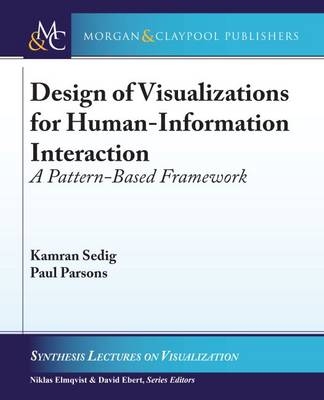
Design of Visualizations for Human-Information Interaction
Morgan and Claypool Life Sciences (Verlag)
978-1-62705-747-9 (ISBN)
- Lieferbar
- Versandkostenfrei
- Auch auf Rechnung
- Artikel merken
Interest in visualization design has increased in recent years. While there is a large body of existing work from which visualization designers can draw, much of the past research has focused on developing new tools and techniques that are aimed at specific contexts. Less focus has been placed on developing holistic frameworks, models, and theories that can guide visualization design at a general level - a level that transcends domains, data types, users, and other contextual factors. In addition, little emphasis has been placed on the thinking processes of designers, including the concepts that designers use, while they are engaged in a visualization design activity.In this book we present a general, holistic framework that is intended to support visualization design for human-information interaction. The framework is composed of a number of conceptual elements that can aid in design thinking. The core of the framework is a pattern language - consisting of a set of 14 basic, abstract patterns - and a simple syntax for describing how the patterns are blended. We also present a design process, made up of four main stages, for creating static or interactive visualizations. The 4-stage design process places the patterns at the core of designers' thinking, and employs a number of conceptual tools that help designers think systematically about creating visualizations based on the information they intend to represent.
Although the framework can be used to design static visualizations for simple tasks, its real utility can be found when designing visualizations with interactive possibilities in mind - in other words, designing to support a human-information interactive discourse. This is especially true in contexts where interactive visualizations need to support complex tasks and activities involving large and complex information spaces. The framework is intended to be general and can thus be used to design visualizations for diverse domains, users, information spaces, and tasks in different fields such as business intelligence, health and medical informatics, digital libraries, journalism, education, scientific discovery, and others. Drawing from research in multiple disciplines, we introduce novel concepts and terms that can positively contribute to visualization design practice and education, and will hopefully stimulate further research in this area.
Kamran Sedig is an Associate Professor in the Department of Computer Science and the Faculty of Information and Media Studies at Western University, Canada. Before joining Western, he was a Research Staff Member at the IBM T.J. Watson Research Center in New York. He received his Ph.D. in Computer Science (Interactive Visual Games for Learning Math) from The University of British Columbia, where his research was nominated for the Governor General's Gold Medal for best Ph.D. dissertation. His M.Sc. was in Computer Science (Artificial Intelligence) from McGill University. His research interests are in human-information interaction, joint human-computer cognitive systems, visual analytics, interactive reasoning with visualizations, visual interface design, and interaction and task design for complex cognitive activities. Sedig's research uses a human-centered approach with a particular focus on human cognitive needs and activities. He is the director of the Insight Lab (insight.uwo.ca). Paul Parsons is an Assistant Professor in the Department of Computer Graphics Technology at Purdue University. In 2013 he received his Ph.D. in Computer Science from Western University, Canada, with a focus on the design of interactive visualizations and interfaces that support cognitive activities. His research interests are in the areas of information visualization and visual interfaces, human-computer and human-information interaction, cognitive and learning technologies, and human-centered computing and design. He is particularly interested in understanding and supporting cognitive processes and activities of both users and designers.
Figure Credits
Acknowledgments
Introduction
Background
Conceptual Elements of Framework
Patterns
Blending of Patterns
Human-Information Interaction
Design Process
Application of Framework
Discussion and Summary
References
About the Authors
| Erscheinungsdatum | 05.05.2016 |
|---|---|
| Reihe/Serie | Synthesis Lectures on Visualization |
| Verlagsort | San Rafael, CA |
| Sprache | englisch |
| Maße | 191 x 235 mm |
| Gewicht | 393 g |
| Themenwelt | Informatik ► Software Entwicklung ► User Interfaces (HCI) |
| Informatik ► Theorie / Studium ► Künstliche Intelligenz / Robotik | |
| ISBN-10 | 1-62705-747-1 / 1627057471 |
| ISBN-13 | 978-1-62705-747-9 / 9781627057479 |
| Zustand | Neuware |
| Haben Sie eine Frage zum Produkt? |
aus dem Bereich


